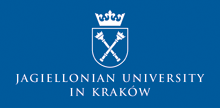Speaker
Description
Breast cancer (BC) is one of the most common women malignancies. Nowadays mammography and ultrasound examinations are basic methods used in screening programs. Mammography provides early microcalcification recognition, crucial for further cancer diagnosis.
High progress in the development of new mammography devices e.g. new flat panel detectors, compression paddles, spectral modes (CESM – Contrast Enhanced Spectral Mammography) and new type of X-Ray tubes gives a variety of new diagnostic modules available for clinical use.
The aim of this study was to compare doses given to the patients during conventional mammography with doses obtained from dual-energy contrast-enhanced spectral mammography. The comparison of entrance surface air kerma (ESAK) and mean glandular dose (MGD) values for both options are discussed in the paper, respectively.
In the study 482 women diagnosed with screening mammography between 2011 and 2014 were respectivetly enrolled. The first group of 250 patients was examined using a fully digital mammo unit, GE Senographe Essential. The second group of 232 patients were examined using the same digital mammography device developed by GE Healthcare with the option of dual-energy CESM acquisition (SenoBright®).
For our group of patients and for an average breast thickness of 45mm (43 - 52 mm), median MGD is 6.6 mGy (values of MGD for a low-energy acquisition and high-energy acquisition were equal to 5.1 mGy and 1.5 mGy, respectively) for CESM compared to 1.2 mGy for Full Field Digital Mammography (FFDM). Moving up to 72 mm average breast thickness, MGD for CESM is nearly 7.5 times higher than for FFDM - medians of 12 mGy and 1.6 mGy, respectively.
Our preliminary data show that CESM might be a new diagnostic tool allowing an accurate detection of malignant breast lesions, giving results similar to those received from magnetic resonance imaging (MRI). However due to higher levels of radiation exposure during CESM, one should take risk factor into account.
Each method has its own benefits with respect to specific applications which are further discussed.

